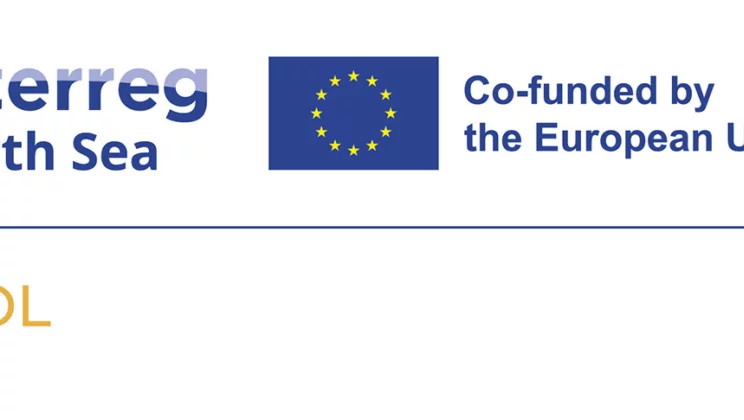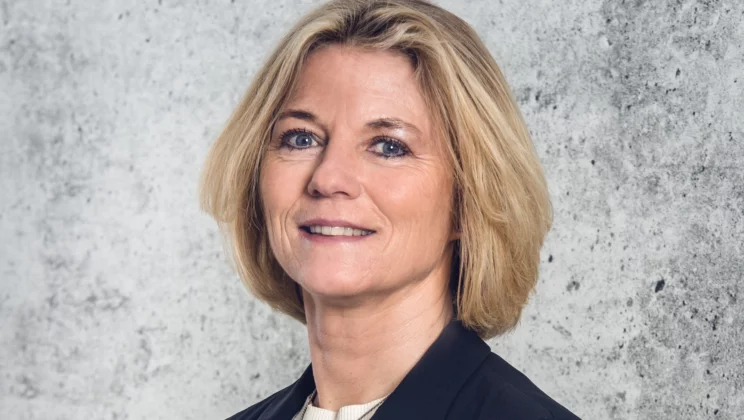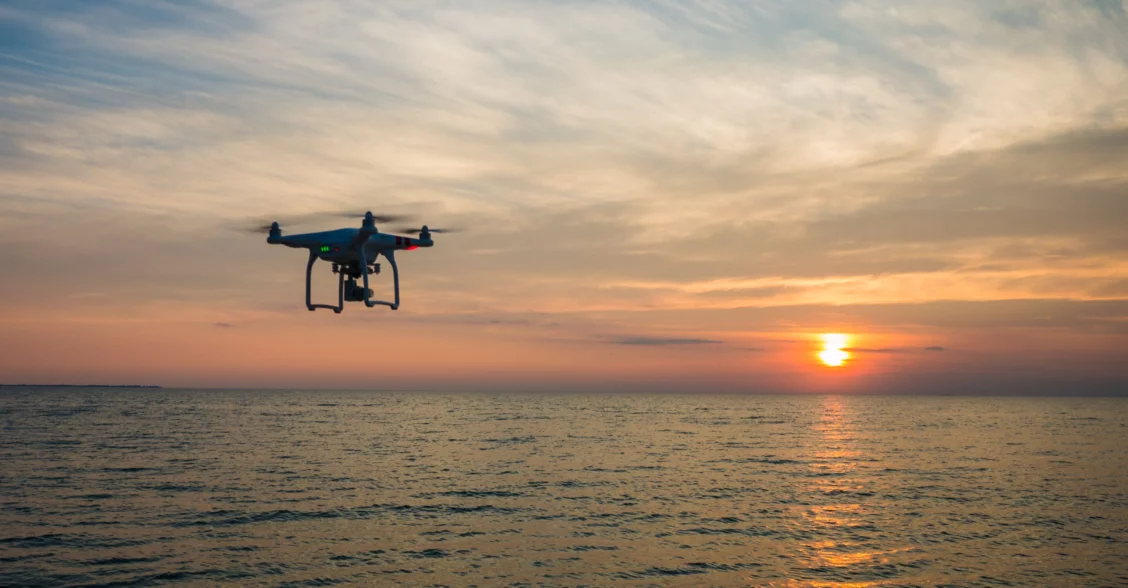How can a drone port and an airport help to enhance the green transition in the North Sea? This is a task that Port Esbjerg and Esbjerg Airport, among others, have taken on for the benefit of the entire EU. All parties involved in the project have just met for the first time in Esbjerg.

An underwater drone can inspect the foundations of a wind turbine or the cables running to the coast. A flying drone can inspect a turbine. A surface drone can use advanced cameras to produce detailed 3D maps of an area that may be used in the planning of a wind farm.
Going forward, both flying drones and underwater drones will play a growing role in the offshore wind industry, especially in relation to the installation, inspection and maintenance of offshore wind turbines.
Therefore, it makes sense to investigate how drones can support the green transition in the North Sea – and this is happening right now.
In April, eleven partners from Belgium, Germany, France, the Netherlands and Denmark began their collaboration to consider how the green transition in the North Sea may best be supported by drones – both at sea and in the air. The partners represent ports, airports, knowledge providers and drone suppliers.
“It’s incredibly exciting, and we’re looking forward to getting to grips with the issues,” says Susanne Kruse Sørensen, managing director of Esbjerg Airport. She emphasises that the eleven partners are ‘just getting their pencils sharpened’ in this four-year project, for which the EU has granted EUR 7.3 million.
This is the first time the EU has granted money to airports as part of its green solutions. The project has an open mandate and is attracting much attention.
“Our launch meeting exceeded all our expectations. Esvagt and Blue Water gave presentations on the developments in France and the Netherlands, among other things, and let’s just say it’s clear they’re putting their best foot forward! For our part, it was a great pleasure presenting Esbjerg to our new collaboration partners,” says Sørensen.

“The project is exciting, and we’re looking forward to getting to grips with the issues,” says Susanne Kruse Sørensen, managing director of Esbjerg Airport. Photo: Esbjerg Kommune
A product of the Esbjerg Declaration
The name of the project is DIOL (Develop Innovative Offshore Logistics), and it is based on the Esbjerg Declaration. The goal is to develop a strong international logistics chain to support the EU’s targets of 65GW offshore wind by 2030 and 150GW by 2050, along with 20GW of green hydrogen production by 2030.
At the same time, the DIOL team will make the preparations to improve the infrastructure of hubs to accommodate next-generation offshore vessels and structures. The partners will also delve into the technical, legal and business requirements for port and airport upgrades.
The DIOL team will also look at the security of supply of renewable energy and infrastructure and explore innovative technologies, such as smart drones, robots and AI.
In other words, the DIOL partners will try to optimise the process of installing the wind farms and supporting the logistics to the North Sea. At the same time, the objective is to ensure that the actual process of erecting the turbines is done in the greenest possible way. One of the ways of doing that is to use drones.
“We expect to be using both sailing drones and flying drones. But how do we optimise logistics when we need to make allowances for the weather and consider the availability of spare parts and crew? We need to be able to work out when we need a helicopter, when we need a ship and when a drone can do the job,” Sørensen explains.
We are only limited by our imagination
The fact is that drones may be employed even more widely. If truth be told, we are only limited by our imagination in working out how drones can support the green transition. For example, they may also be used to monitor wildlife, such as birds and marine animals, to minimise the impact on the marine ecosystem. Drones may also be used to monitor construction activities to ensure everything is going according to plan and provide a bird’s eye view of the entire construction site, which can be useful for project managers.
In the event of an accident or emergency, drones may be dispatched quickly to assess the situation before human teams arrive.
In order to be able to utilise all their potential and accommodate the drones, the project partners will focus on establishing where flying drones need to have an airport and where sailing drones need to be able to “dock”.
The partners will also discuss fuels. If a drone is to fly from Esbjerg Airport, should it fly on electricity or hydrogen? And what about the helicopters that are currently being used, will they also be getting greener fuels?
From Heligoland to Cuxhaven
Just as the installation of offshore wind is challenged by legislation and consultation processes, so is the use of drones.
This is particularly true when drones have to cross national borders. It is not easy to fly a drone across the border into Germany without infringing various laws.
One of the sub-projects is to get a drone to fly from Heligoland to Cuxhaven. Technically, it is not difficult, but legally, it is full of pitfalls. This is an issue that needs to be overcome in order to facilitate the green transition. Therefore, lessons must be learnt.
The idea is that the experience with drone flights, for example, will be utilised widely in the EU. This is also why parties from France, the Netherlands, Belgium and Germany are involved, sharing in the knowledge to optimise their logistics chains.
“Once the drone project is completed, I believe that Esbjerg will have both a drone port and a drone airport. In time, we’ll be able to offer fossil-free fuels here. Also for aeroplanes,” says Sørensen.
“There’s been a lot of talk about an energy island and offshore wind farms, but not so much about the logistics of the construction process. I hope that this project will contribute by providing green logistics solutions,” says Sørensen.
In addition to expecting a green logistics chain, Sørensen also believes that the project will generate business.
“We believe that collaboration between ports and airports like Esbjerg Airport will generate business. Port Esbjerg already has a partnership project with other wind ports, which works very well, and we see our project in a similar vein,” Sørensen concludes.
The project will run until April 2027.
Go to overview

